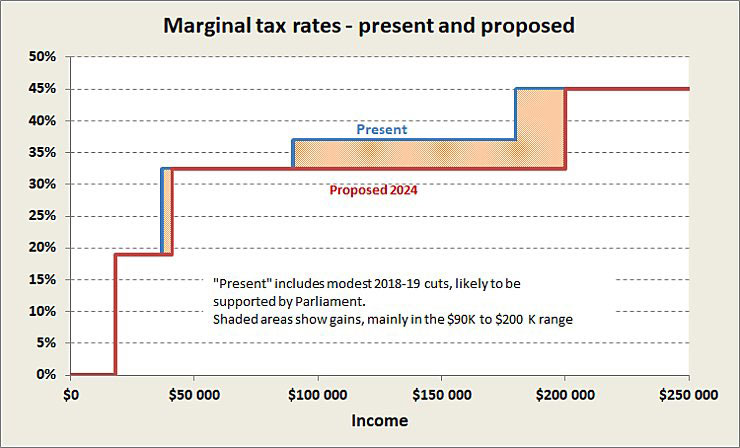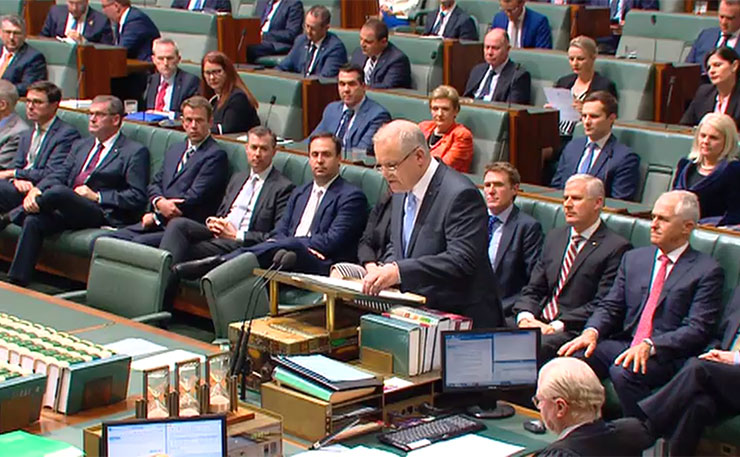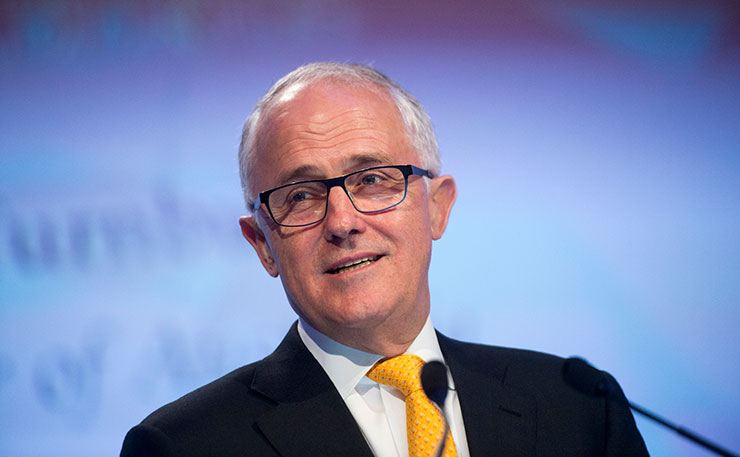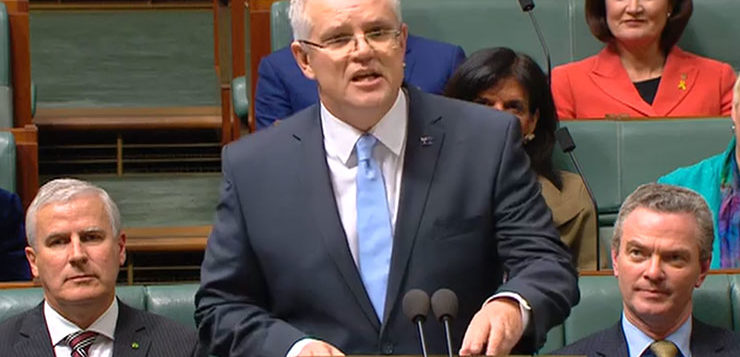The government’s proposed income tax cuts carefully target the well-off. Not the very rich, but the next cohort down – the “9.9 per cent” who have steadfastly held on to their privileges, writes Ian McAuley.
As Ben Eltham wrote, income tax cuts are the centrepiece of the budget. Public reaction has been mixed, with polls recording a large proportion of ‘don’t knows’. That confusion is understandable, because the tax changes are indeed complex and poorly explained.
After writing in general terms about the budget, I decided to go into a little more detail about their effects, with the help of data from the Australian Tax Office and the Bureau of Statistics.
The cuts are targeted at taxpayers in the $87,000 to $180,000 income range (from July the $87,000 bracket will move up to $90,000).
At present people in this income bracket are taxed at a marginal rate of 37 per cent. That is, for every dollar they earn in excess of $90,000, 37 cents is withheld as tax. Under the long-term budget proposals, in 2024 that rate would fall to 32.5 per cent and the upper bracket would lift to $200,000, meaning that all incomes from $41,000 up to $200,000 would be in the same marginal tax bracket. That would be a radical simplification of the tax scales, in the direction of a regressive “flat tax” covering two-thirds of taxpayers.
The present and proposed tax rates are shown in the figure below. What stands out is the concentration of gains in the $90,000 to $200,000 bracket.

In other words, there would be no step in marginal tax rates at the $90,000 level, meaning that the benefits would accrue to those with incomes between $90,000 and $180,000. That’s the income enjoyed by many full-time professionals – general practitioners, military officers, university lecturers, engineers and mid-ranking public servants, particularly as they advance in their careers.
They probably don’t consider themselves privileged, certainly not when they compare their financial lot with corporate executives and very highly-paid professionals such as surgeons and partners in law firms, and relative to general incomes, most professionals don’t enjoy the premiums and prestige of past times when a medical degree, for example, was a passport to status and prosperity.
The reality, however, is that people in this income bracket are very well off compared with the population in general. Average adult full-time earnings in Australia are $82,000 (and considerably less for those working part-time). That’s an average figure, pushed up by those on very high salaries. The median income for working-age adults – the income that puts one in the middle of the income distribution – is around $60,000.
In fact, only about 12 per cent of the adult population – fewer than one in eight – have an income above $90,000. These are Australia’s equivalent of what Matthew Stewart calls “America’s new aristocracy” – the “9.9 per cent” to distinguish them from the very rich.
It is unsurprising therefore, that while a post-budget Essential poll found little general support for the budget tax cuts, 54 per cent of respondents with incomes above $104,000 agreed with the idea of “giving higher tax cuts to those on higher incomes”. But the explanation goes a little further than straight personal self-interest, for three reasons.
First, as social research shows, we are living in an increasingly class-stratified society. Australians don’t like talking about social class – that’s something that afflicts Old World countries such as England. But it’s becoming easier and easier to go through life without having much to do with people whose economic situations are different from ours. We may mix freely with people from different birthplaces, of different religious beliefs, of different sexual orientations, but we mix less with people of different economic means.
Consequently we are likely to believe that whatever our means, our incomes and wealth are ‘about average’. This belief is reflected in Peter Costello’s reference to “the forgotten people” – high-income earners supposedly worthy of a tax cut. (In fact neither Morrison nor any other recent treasurers have forgotten them.)

Second, many have a sense of entitlement. These are people who have worked diligently, who achieved high grades at school, who chose the difficult courses at university and who have made their way in a competitive job market or in professional practices and small businesses.
Their self-image is that they belong to a self-made meritocracy, distinguishing themselves from the very rich who have benefited from generous inheritances and from corporate CEOs, entertainment celebrities and others with seven digit incomes and vulgar lifestyles to match.
They are apt to forget how they benefited from those who went before, such as the taxpayers who funded generous Commonwealth scholarships and free university education, which those now in their 50s and older enjoyed. And in more recent years many have benefited from the present government’s absurdly generous breaks for speculation in shares and housing.
Third, some people in these income bands may have misunderstood the difference between marginal and average tax rates, as Ross Gittins points out. Many of these professionals have incomes in the lower end of the $90,000 to $180,000 band. Someone with an income of $100,000 would enjoy a fall in their marginal tax rate from 37.0 to 32.5 per cent, but their total tax would fall by only $990 or one per cent ($540 because of a shift in the intermediate tax bracket from $37,000 to $41,000 and $450 because of a fall in their marginal tax rate). Their average tax rate would fall from 26.5 per cent to 25.5 per cent. The beneficiaries would be those up near the $180,000 level. But the message Morrison would like these people to hear is “your tax is falling from 37 per cent to 32.5 per cent”, not that it is “falling by one per cent”.
The government’s rationalisation for reducing the marginal tax rate on high incomes lies in the idea that high marginal tax rates discourage people from working harder. That promotion to the next level on the corporate pay scale or a few more hours spent in one’s own business would become more appealing if one could keep 67.5 cents of each extra dollar rather than 63.0 cents as at present.
That’s bunkum. For a start, people are not so calculating. There are many factors motivating people to seek promotions, and for people already well-paid, money is only a minor consideration. I doubt if there are many army majors who would be more motivated to seek promotion to colonel or university lecturers who would want to become head of school lured by a 4.5 cent in the dollar cut in marginal taxes.
Most professionals actually enjoy their work, and they often eschew higher-paid positions that take them away from their craft and that demand more of their time.
In fact for many people enjoying high incomes, a lower tax rate may actually encourage them to work less. Not everyone with a high income is a workaholic: in fact one of the dividends of productivity gains over the long term has been a slow decrease in hours worked. That’s no bad thing: we already have an uneven distribution of work, but it’s not the way the government thinks.
If the government really wanted to encourage people to work it would pay attention to the lower tax brackets, such as the tax-free threshold before the first (19 per cent) tax bracket cuts in. That has stayed at $18 200 since 2012, in which time nominal wages have risen by 12 per cent, and the government proposes freezing it for another six years. (For a thorough analysis of the equity effects of the government’s inconsistent movement of tax brackets, see an article by John Daly and Danielle Wood of the Grattan Institute.)
There is a case for reform of income tax, but these tax cuts are bad public policy, and perhaps voters have a feeling that they’re not quite right as William Bowie points out on his Poll Bludger site. While many people believe they would personally benefit from the cuts, many of the same respondents believe they would not be good for the economy as a whole.

The proposed cuts would certainly make the income tax system less progressive. It is all very well for the Treasurer and the Prime Minister to claim that under their changes the income tax system would still be progressive, but Commonwealth income taxes account for only 57 per cent of total Commonwealth, state and local taxes. Most of these other taxes, such as the GST and car registration, are regressive. We need a strongly progressive income tax to retain some progressivity in our total tax system.
The other inequity is that the Coalition’s proposed tax cuts do nothing for the young, already burdened with high housing costs and tertiary education debt, and are also expected to subsidise the old through private health insurance. Unsurprisingly, among Australians under 30, only one per cent have an income above $90,000. Certainly some of them will move into higher income brackets, but by the time they do they will have accumulated a pile of debt, and many, having been forced to rent rather than buy their way into the housing market, will not have a base of equity in their housing enjoyed by previous generations.
Saul Eslake said of the budget that he was worried about “the way the whole system of income, wealth and taxes has all been changed in a way which advantages baby boomers at the expense of their kids.… It astounds me that there isn’t more anger among young people about that”.
That’s the gross inequity we need to address.
Donate To New Matilda
New Matilda is a small, independent media outlet. We survive through reader contributions, and never losing a lawsuit. If you got something from this article, giving something back helps us to continue speaking truth to power. Every little bit counts.




